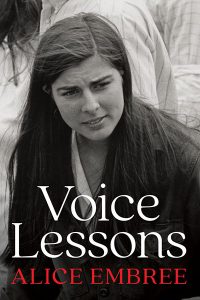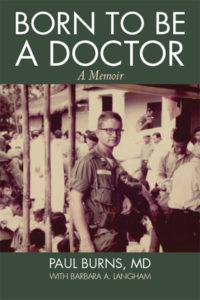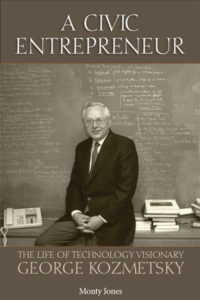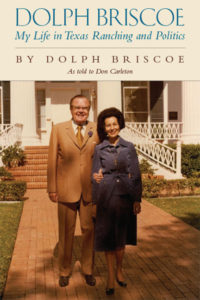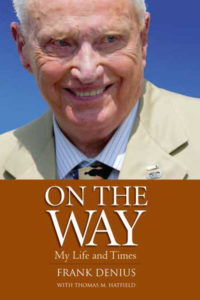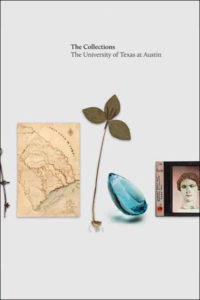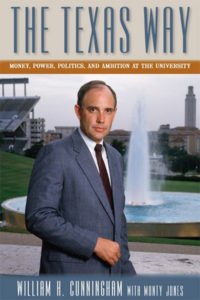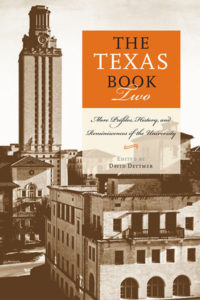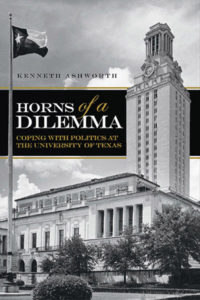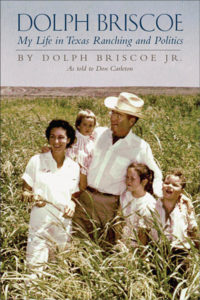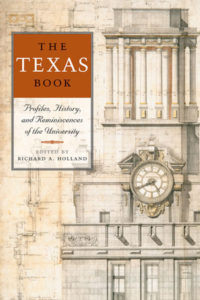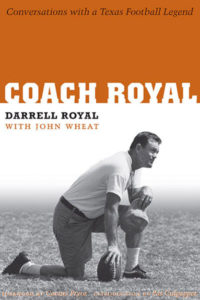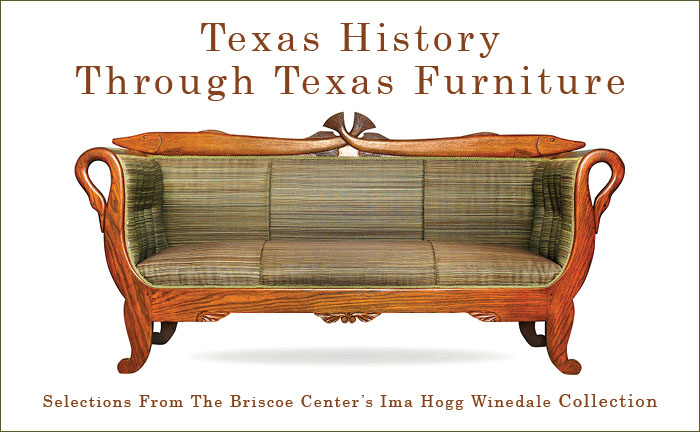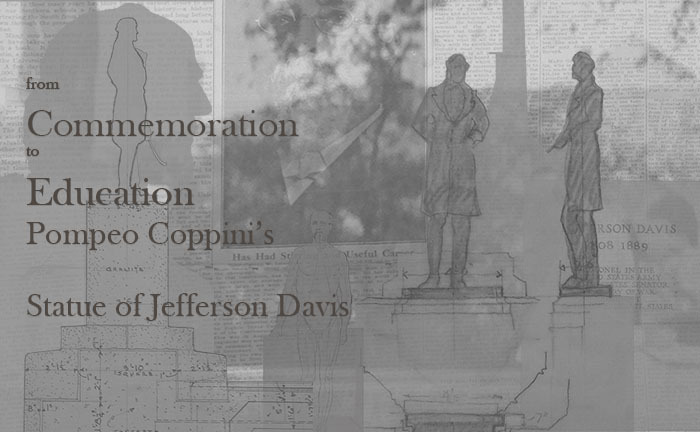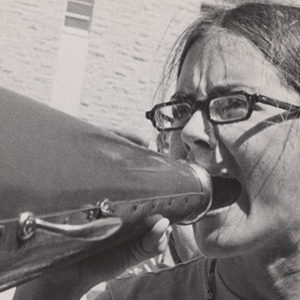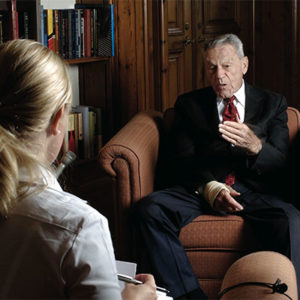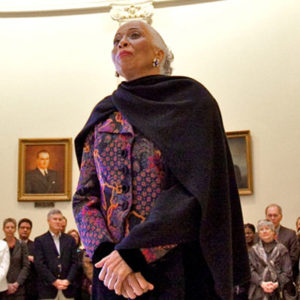When it was established in 1883, the University of Texas was set on a forty-acre expanse named “College Hill” that would eventually overlook the Texas State Capitol. The school was given the constitutional mandate to be “a university of the first class.” Since its founding, the university has grown from a one-building campus with more mesquite than students to the flagship institution of a 150,000-student system and first-tier research university of international renown. The story of the institution’s evolution is preserved in the University of Texas Archives at the Dolph Briscoe Center for American History.
The archives preserve and make available for research the historically valuable official records of the university, the personal and professional papers of significant individuals from its history, and additional materials that substantively document its growth from a regional college to a world-leading research institution. Currently, the archives maintain some 4,500 linear feet of records in addition to personal papers, books, and periodicals. They also house student publications; sound recordings and oral histories; and photographs, maps, and drawings. Researchers may find particular areas of interest within the Memorabilia Collection, the Richard T. Fleming University Writings Collection, University Publications, Visual Materials, and the Shirley Bird Perry University of Texas Oral History Project. The archives also served as a critical source of material for the Eyes of Texas History Committee.
UT Archives hold official university records as well as collections of prominent faculty, staff members, and alumni. The papers and materials of Walter Prescott Webb, Eugene C. Barker, Maurice Ewing, Clarence Ayres, Woodrow “Woody” W. Bledsoe and others shed light on accomplishments made and research conducted at the University over the years.
When it was established in 1883, the University of Texas was set on a forty-acre expanse named “College Hill” that would eventually overlook the Texas State Capitol. The school was given the constitutional mandate to be “a university of the first class.” Since its founding, the university has grown from a one-building campus with more mesquite than students to the flagship institution of a 150,000-student system and first-tier research university of international renown. The innovative spirit of Texas spurred the school’s expansion as did changing national trends in higher education, and its extraordinary growth is the result of many forward-thinking, collaborative individuals. The story of the institution’s evolution is preserved in the University of Texas Archives, the official repository for documentation on the university’s history and development, which is housed at the Dolph Briscoe Center for American History.
The archives preserve and make available for research the historically valuable official records of the university, the personal and professional papers of significant individuals from its history, and additional materials that substantively document its growth from a regional college to a world-leading research institution. Currently, the archives maintain some 4,500 linear feet of records in addition to personal papers, books, and periodicals. They also house student publications; sound recordings and oral histories; and photographs, maps, and drawings illustrating the rich history of The University of Texas at Austin and The University of Texas System administration. Researchers will find official records as well as faculty and staff papers, the Memorabilia Collection, the Richard T. Fleming University Writings Collection, University Publications, Visual Materials, and the ongoing University of Texas Oral History Project. The archives also served as a critical source of material for the Eyes of Texas History Committee.
Official Records

Among the cornerstone collections of the archives are the Official Records—the central administrative documents of the office of the president, the system chancellor’s office, and the board of regents. The Official Records contain correspondence, minutes, financial records, annual reports, and printed matter that were created in the course of carrying out university business. The archives illustrate the day-to-day processes of forging university policies as well as the operations of a large state institution. But the records go beyond administrative memos—included in the files is a wealth of correspondence that was written by members of the public and sent to the office of the president. Some of the correspondence reveals the university’s more painful history, including the letters received in 1957 after African American mezzo-soprano Barbara Smith was removed from the music department’s production of Dido and Aeneas because she was playing opposite a white male lead. The letters—both for and against Smith’s inclusion in the opera— show not only the public’s great compassion but also its narrow-minded fear. The records were key resources for the Briscoe Center’s award-winning documentary film on Barbara Smith Conrad, When I Rise (2010). The archives also contain historical records of the board of regents as well as those for a number of the university’s academic colleges, departments, bureaus, and research components.
Faculty/Staff Papers
The Faculty/Staff Papers unit contains the personal and professional papers of significant faculty, staff, and administrators in a wide range of disciplines and fields, including mathematics, history, and aerospace engineering. Former faculty members represented in the collection include economist Clarence Ayres, who is best known for his theory on institutional economics; Dr. Woodrow “Woody” W. Bledsoe, a professor of computer science and one of the founders of artificial intelligence; and J. B. Colson, who developed an accredited program in photojournalism and headed it for over twenty years. Students of the program have won 13 Pulitzer Prizes. Many former UT professors’ papers can also be found in the Center’s Archives of American Mathematics.
Researchers also can study the papers of historians Eugene C. Barker and Walter Prescott Webb, including Barker’s research on Stephen F. Austin and his notes on the Alamo, and Webb’s original research notes for his seminal book, The Great Plains. Roy Bedichek, a naturalist and director of the University Interscholastic League, marine geophysicist Maurice Ewing, and biochemist and nutritionist Roger J. Williams also placed their papers in the University Archives. The documents of administrative luminaries have been acquired as well, including those of Harry Huntt Ransom and Hans Mark. Ransom, a bibliophile and university president who was known for his avid book collecting, used the collection he amassed to start the Humanities Research Center that now bears his name. Mark, a former National Aeronautics and Space Administration (NASA) administrator, became the university system’s chancellor in 1984, and he was instrumental in bringing the high-tech sector to Austin.
Memorabilia and Artifacts
The Memorabilia and Richard T. Fleming Collections contain material related to the early days of the university. The Memorabilia Collection, which was established by former university president Harry Y. Benedict, houses items from 1883 to 1940, including printed, photographic, and manuscript materials. Of special significance are commencement programs from 1886 and files documenting annual RoundUp activities in the 1930s.
Created in 1962, the Richard T. Fleming University Writings Collection was assembled by prominent alumnus and Texas Gulf Sulphur Company executive Richard T. Fleming. The collection contains more than 7,500 publications, photographs, and mementos from the years 1883 to 1978, including documentation on the history of the university, as reflected in the writings of present and former faculty, staff, administrators, and students. The Fleming Collection even holds a brick from the Old Main Building, the first university building ever constructed in Texas. The brick, along with a piece of roof slate and a red ceramic tile, was salvaged when the building was demolished in 1933 to make room for the current Tower and Main Building.
University Publications
The Briscoe Center’s library component acquires and catalogs the Official Publications Collection, which contains the university’s self-generated and distributed materials. The publications include meeting documentation, such as minutes of board of regents and faculty meetings, catalogs, bulletins, college and departmental newsletters, faculty/staff directories, and budgets. University of Texas Press and student publications (including Cactus yearbooks, directories, and literary and humor magazines) also are preserved in the collection. Paging through the Cactus yearbooks, one can see the student body and the campus change rapidly from the flood of GIs after World War II to the contentious protests on the West Mall in the late 1960s. The yearbooks also contain pictures of famous alumni, including former Governor John Connally, who is pictured as a student leader, and Farrah Fawcett, whose photo is included in the “Ten Most Beautiful” female students.

The Briscoe Center’s library component also maintains extensive holdings of books, pamphlets, or other publications about the university and persons affiliated with it. The center’s newspaper archives include The Daily Texan as well as many irregularly produced student newspapers. One particularly enjoyable student publication was The Texas Ranger, a humor magazine that was published from 1923 to 1972. The university’s irreverent sense of humor is readily on display in the pages of the Ranger, which pulled no punches. For example, the cover of the February 1966 issue depicts President Lyndon B. Johnson as a snake oil salesman at the height of the Vietnam War—a cartoon that landed the publication in hot water with board of regents chairman Frank Erwin.
Visual Materials

The archives maintain most of the university’s visual materials, which include photographs, slides, transparencies, prints, drawings, and moving images. The center’s Prints and Photographs Collection houses photography files on individuals as well as university departments, events, and school traditions. And the retired photography files of Student Publications offer yet another source of rich pictorial history. They contain photographs and negatives that were produced for the Daily Texan, the Cactus yearbook, and other student publications, and depict everything from Longhorn football games and Greek life to student clubs, academic honors, and Texas Union activities.
Shirley Bird Perry University of Texas Oral History Project
The Shirley Bird Perry University of Texas Oral History project, a joint effort of the Briscoe Center and the Office of the President, also is housed in the University Archives and boasts the oral histories of more than fifty university luminaries. Interviews in the collection offer candid and detailed perspectives from individuals who have made a significant mark on the university. They include the reflections of former university presidents, many members of the board of regents, former system chancellors, and prominent faculty. The broad range of topics discussed in the interviews cover the university’s institutional memory, the evolution of higher education at a national level, and Texas higher education policy.
Among the collection’s more than 150 oral interview sessions, researchers will find frank discussions on topics ranging from the effects of state politics on the university to the construction of new buildings and the 2003 tuition deregulation legislation. The collection also explores the stories behind integration at the university, from Sweatt v. Painter to Hopwood v. Texas and the top ten percent rule. The interviews include the candid recollections of storied characters, such as Harry Ransom and Frank Erwin, and they address the controversial breakup in 1970 of the College of Arts and Sciences.
In His Own Words
In addition, the collection explores more recent events and policy agendas, including the expansion of Darrell K Royal-Texas Memorial Stadium, the growth of the College of Liberal Arts, and the evolution of the university’s top administrative offices. The most recent additions to the collection feature a history of Title IX and the department of women’s intercollegiate athletics from 1975 to the present. The interview tapes and transcripts illuminate questions as to how and why the university’s policies are established and implemented.
The many facets of the University Archives at the Dolph Briscoe Center for American History preserve a wide range of materials that record the triumphs and struggles of the university. For scholars, the archives provide insight into policy decisions, offering a window into national trends in higher education. For students and the general public, the holdings illuminate the history of the Austin campus they love—a “university of the first class.”
Adapted from The Collections: The University of Texas at Austin, 2015. Updated 2020.
Our collections inspire our own projects, including books, exhibits, programs, films, and educational materials.
Banner image: Color tinted photograph of the Old Main Building, ca. 1900. Image detail from di_01441.





